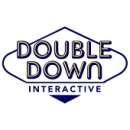In user experience and interface design, solutions aren’t necessarily black and white, and they often live somewhere in the tricky gray area in between. With nearly limitless options, a designer’s responsibility is to identify the right shade or undertone to resolve the problem — so how do they determine the best approach?
For starters, user-focused designers do everything from journey mapping and storyboarding to interface testing and creating verbal workflow diagrams to make abstract concepts easier to understand. In navigating solutions, they have to visualize the experience from a user’s point of view — both from a big picture and zoomed-in perspective — without over-complicating the overall journey.
At Tyemill, a data-driven software research and development company, senior UX/UI designer Josh Coppola maintains the simplicity of user journeys by regularly reevaluating design patterns to ensure his team’s updates don’t overcomplicate the product. “Setting a tempo to revisit aspects of the journey is a good way to keep your navigation and interaction from growing too complex,” he said. By breaking down the journey into smaller pieces, Coppola finds it much easier to pinpoint which, if any, stages of the workflow are hindering the user experience.
At virtual game developer DoubleDown Interactive LLC, Jason Robinson has also found that the best solutions are often the most straightforward. The senior UX designer knows all too well that it may be satisfying to land on what feels like a perfect answer, but there’s a fine line between innovation and complexity, something he refers to as “misplaced cleverness.”
With UX and UI designers in mind, Built In Seattle asked Robinson and Coppola to share which processes have helped them keep the user journey streamlined across their products and what common pitfalls they make a point to avoid.
When do you know it’s time to simplify your product’s user journey?
UX design for games at DoubleDown is so much fun right now. We’re still expanding our existing titles, but we’re also exploring entirely new ways to delight our audience. That exploration entails both reward and risk, and as an advocate for our users, I want to make sure their journey into new territory is comfortable and welcoming.
Every now and then, I find myself having to explain a feature we’re designing — whether to myself or other teams. That’s a natural part of the process when an idea is new, but if those explanations don’t rapidly start shrinking away into clarity, it’s a sign that we need to reexamine. Any complexity we find ourselves needing to talk around will be felt all the more deeply by our players on their journey.
What process do you use to identify opportunities for simplification?
Those often come from testing. One of the titles we’re currently working on offers the player a handful of tools to plan their journey through the game and decide what challenges they want to take on next. We originally designed the interface in a way that required players to repeatedly enter a tool, then exit. It’s a common design pattern — especially for user flows — but those taps rapidly add up.
In testing, we could see that movement between these screens felt cumbersome and drew attention to parts of the game that aren’t exciting. We’re now wrapping up a design adjustment that allows users to hop between these utility screens with a single tap, rather than requiring a round-trip journey each time. It feels great, and even though players won’t be aware of the work that went into making it happen, they’ll experience the difference because the core loop feels lighter and lets them return more quickly to the gameplay they’re enjoying.
Be careful not to fall in love with your cleverness!”
What are some common traps designers fall into that result in an overly complicated user journey?
Be careful not to fall in love with your cleverness! As an experienced designer, it feels so good to land on that “perfect” answer — the elegant, innovative or subtle solution that masterfully solves a complex friction. But it’s a fine line. Misplaced cleverness can so easily introduce confusion or complexity for our users. It’s always important to hold our designs with an open hand, and observe, test, listen and look at data. The best solution often reveals itself to be the most straightforward one.
When do you know it’s time to simplify your product’s user journey?
Design patterns that work well at a small scale may not hold up as new scenarios or features come online, so it’s important to reevaluate them every few major releases. A dashboard acting as an entry point for four scenarios may not scale up to eight, or a data view with two filters may not work with 12. These can increasingly cloud your user journey as the product develops, but sometimes there’s no clear cutoff point at which to take action. Setting a tempo to revisit these aspects of the journey is a good way to keep your navigation and interaction from growing too complex.
How your product handles edge cases and errors is equally important to a happy user path.”
What process do you use to identify opportunities for simplification?
Workflow diagrams are a great tool for both critically examining and communicating the details of a particular scenario. One variation I’ve found to be helpful is a verbal workflow diagram, where you explain the scenario out loud to yourself while paying close attention to the language you use to describe things. Speaking out loud forces you to slow down and walk through the process more deliberately. If you find yourself pausing or stumbling at certain points in the process, it could indicate room for simplification. Using lots of “if” or “unless” statements to describe a single step might also be a sign of too much complexity.
Using this process recently allowed me to identify part of a financial analysis platform that was becoming too complex. During the verbal walkthrough, I realized there was too much happening in a single view within the product’s stock portfolio uploader. In response, I broke the workflow down into a series of steps to make things more manageable. After walking through the process a second time, I realized the uploader now had too many steps. The end result was a happy medium that smartly broke a complicated process down into a few self-contained steps.
What are some common traps designers fall into that result in an overly complicated user journey?
It’s easy to develop tunnel vision and only consider how the journey looks when everything goes smoothly, but how your product handles edge cases and errors is equally important to a happy user path. Consider all the ways that things can go wrong at each step and factor in their impact on the scenario. Perhaps your journey can be redesigned to prevent users from entering into an error state through a clever choice of input or navigational elements. When issues do occur, it’s possible that your product can neatly communicate that to the user or provide easy suggestions to resolve them.









